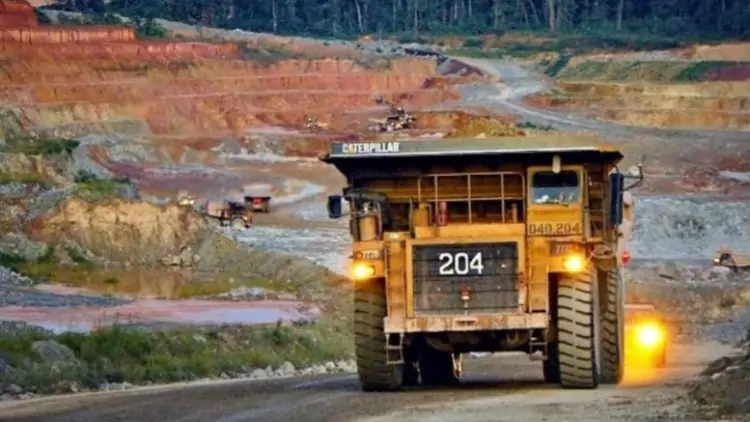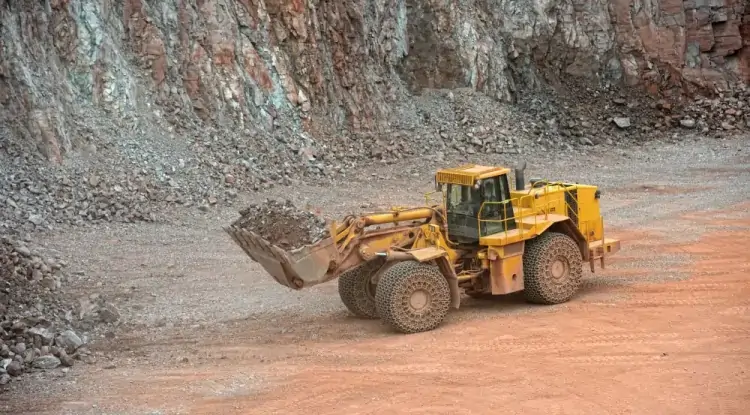How chilly relations with China are playing out for Canada’s miners
As the world’s largest metal consumer, the second largest economy in the world, and the largest funder of overseas metal projects, China’s impact on the mining business globally cannot be overstated.


That’s why Canadian miners have been paying close attention to recent political and economic developments involving China.
Three key stories have characterized the first half of the year. Firstly, Canadian businesses are seeing the effects of the new investment restrictions the government implemented last year, requiring ministerial approval on Chinese investments in the Canadian mining sector. Alongside these new restrictions on inbound Chinese investment, Canada’s traditional allies have been courting Canada as they look to “friend-shore” their supply chains and diversify away from China. Finally, the underwhelming economic rebound following China’s reopening has reduced the Chinese import of metals writ large. These political and economic trends have changed the investors available to Canadian miners and softened demand in the world’s biggest metal consumption market.
Chinese investment falls
We have seen a decline in Chinese investment in Canadian metal firms as a result of the worsening Sino-Canadian relationship. However, politics is not the only factor behind the drop off. It’s also part of a larger slowdown in Chinese dealmaking over the last several years. Chinese miners are facing domestic and international pressure to avoid owning assets abroad, especially in perceived-hostile jurisdictions, like Canada. As President Xi Jinping began his unprecedented third term with a new handpicked Politburo earlier this year, the messaging from China’s highest political organ has set out a more conservative development strategy focused on national self-reliance.
Previous messaging from governmental elites highlighted the need for continual economic growth, since January however, the new committee has instead preached the prioritization of self-reliance, calling for countrymen to traverse the new “turbulent seas” and “solve the problem of strangleholds by foreign countries.” Within the Chinese political system, state-affiliated firms take their cues from such elite political messaging and have therefore been hesitant to invest in countries perceived to be geopolitically hostile. As a result, Chinese investment funds and large national miners, which operate with varying degrees of independence but still have close ties to the government, have limited investment abroad.
Canadian inbound investment from China has also been slowed by the Canadian government’s 2022 policy restricting investment by foreign state-owned enterprises (SOEs.) Any new investment would need approval from the Canadian Minister of Innovation, Science, and Industry and will be subject to national security reviews. This policy applies widely to all stages of the value chain, from extraction to refining, and includes both non-direct and non-controlling shares. These Canadian national security measures are indicative of the “stormy seas” that Chinese leadership sees abroad and discourages new investment into Canada.
Given the friction from both the Canadian and Chinese sides, miners are still feeling around for what sorts of deals are possible. Purchasing a Canadian miner’s entire stake in an international project, such as Zijin’s purchase of Suriname’s Rosebel gold mine from Toronto’s Iamgold (TSX: IMG) for US$360 million, seems to be one of the few options left on the table since purchasing stakes in Canadian mines, or miners, or partnering with Canadian firms are all unlikely in the current environment.
Outside of the Sino-Canadian context, Chinese investment in overseas metals has been declining globally. The AEI Chinese Overseas Investment Tracker estimates that Chinese companies spent just under US$8 billion on major investments in overseas metals projects last year. To put this in perspective, Chinese firms spent around US$9 billion annually from 2020-2021. Furthermore, these overseas metal investments are well below the US$20 billion of annual investment that Chinese firms deployed from 2015-2019. EY reports that in the first quarter of 2023, Chinese investment into North America was focused more on healthcare and life science companies than on physical assets.
Canadian miners and Chinese partners are still feeling out how this mutual suspicion will affect business, and what sorts of deals are acceptable under the new paradigm. The government reassured Canadian miners in March that they would not require the divestment of existing Chinese stakes in major miners like Teck Resources (TSX: TECK.A/TECK.B; NYSE: TECK), Ivanhoe Mines (TSX: IVN), and Barrick Gold (TSX: ABX; NYSE: GOLD), and while new dealmaking has mostly slowed, China’s Sinomine is reportedly considering expanding the Tanco lithium mine in Manitoba.
Canada turns to strategic allies
The first half of the year also saw an increase in mining engagement from Canada’s strategic allies, decreasing China’s relative importance in Canada’s trading portfolio. G7 governments collaborated to de-centre China from critical mineral supply chains, and launch new collaborations between Canada and its strategic allies. While this indicates a positive trend for Canadian miners in key areas, these discussions have not yet transformed into hard financing commitments or mobilization of capital.
In March, Minister of Energy and Natural Resources Jonathan Wilkinson and his U.K. counterpart signed a joint statement of intent, indicating the two governments’ intentions to collaborate on expanding supply, and engaging the U.K.’s mining engineering and financing sectors. The Trudeau government has signed similar agreements with South Korea, the European Union, Japan, and the United States. Alongside the bilateral talks, the May G7 meeting in Japan produced the “G7 Clean Energy Economy Action Plan,” where member countries committed to building resilient clean energy supply chains and “reduce undue strategic dependencies.”
It’s not only public-public partnerships. In many cases, governments have been working with their respective national champion corporations to form public-private partnerships in their diplomatic efforts to secure steady access to critical minerals. Following talks during German Chancellor Olaf Scholtz’s visit last summer, the Canadian federal government and Volkswagen recently committed to building a $20-billion battery plant in St. Thomas, Ont., with Volkswagen planning to source materials from local Canadian miners, though no formal deals have been announced yet.
The Canadian government is likely hoping that the funding gap resulting from a withdrawal of Chinese capital can meaningfully be filled by allied countries and their firms looking to secure access to critical minerals. The Biden administration confirmed that both American and Canadian mining companies were eligible for funding through the US$250 million allotted to the U.S. Department of Defense last year, earmarked to expedite the mining and processing of critical minerals. Automakers have made some commitments to Canadian miners, like Stellantis’s US$155-million investment in McEwen Copper and GM’s US$650-million equity and off-take deal with Lithium Americas (TSX: LAC), while other carmakers have indicated interest but not specified any concrete financial pledges. It remains to be seen if that will be sufficient to offset the decline in Chinese capital, and critics have raised questions about when the cash will arrive. High-risk bets on mining juniors might make some partners uncomfortable, especially if they do not have a long history of investing in risky mining assets.
Sluggish Chinese recovery
While politics has certainly been front and centre for those following Canadian news, there are also domestic realities overseas that are shaping the relationship. The Chinese economy had an underwhelming first half of 2023, and this has suppressed demand for imported metal. Following the collapse of the zero-Covid strategy in December 2022, many analysts predicted a massive surge in growth and consumer spending resulting from economic reopening. While growth rates have risen from 3% in 2022, they have disappointed compared to expectations earlier in the year. The first quarter’s 4.5% growth rate was softer than the IMF’s expected 5.2% as consumers shunned real estate purchases and industrial output did not increase as much as hoped. As a result, most international banks have cut growth expectations for 2023.
While commodity imports remained more resilient than the other parts of the Chinese economy, this limited macroeconomic growth has meant a lower demand for Canadian metals. Even with South American supply disruptions raising Canada’s copper exports in March, Chinese imports of Canadian copper are still down 4% year-over-year to 38,350 tonnes for the first four months of 2023. Iron has stayed resilient, and grown year-over-year after a poor 2022, but forecasts for the rest of 2023 are less certain.
Chinese policymakers have indicated concern about hitting the government-set 5% economic growth target for this year, hampered by a limited bounce back in industrial output and the ongoing softness in the Chinese real estate market — a problem that the IMF highlighted in May. The big question now from China’s macroeconomic perspective is whether or not the central government plans to unleash new stimulus to incentivize growth. Historically, central government stimulus has tended towards debt-fuelled major infrastructure projects, which although economically inefficient at this stage of development, stimulate demand and raise metal prices. While the government would ideally like to stimulate higher consumer growth and facilitate the maturation towards a service-based economy, attempts to stimulate private consumption have traditionally failed, putting central government policymakers between a rock and a hard place.
H2 developments
In the second half of 2023, Canadian miners should watch for several key landmarks, including significant investments by automakers into Canada’s mining sector, and a rebound in Chinese domestic industry. Moreover, miners should increasingly pay attention to whether escalating Sino-Western spats spiral into new restrictive policies, like the Chinese export controls on critical minerals gallium and germanium that began on Aug 1. Amidst the massive changes from the last six months and an uncertain future, the mining industry must be nimble, alert to both risks and new opportunities brought on by an evolving China situation.














